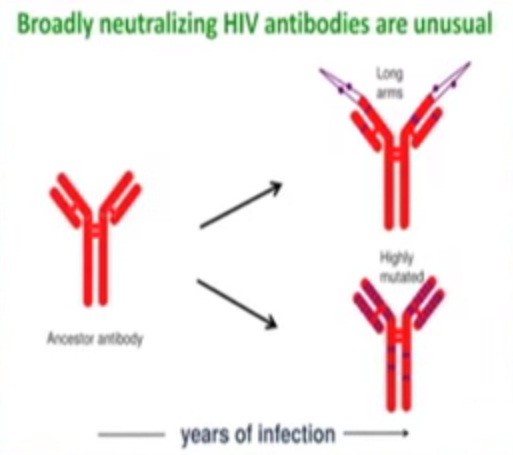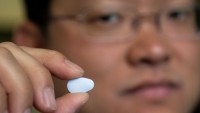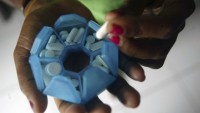DNA Nanomachines Detect HIV Rapidly
| Darlene Tverdohleb | | Oct 08, 2015 10:27 AM EDT |
(Photo : eNCA) An antibody has been found to fight HIV.
It is found out that DNA nanomachines can rapidly detect HIV, scientists say. According to Phys.org, a nanoscale machine that is composed of synthetic DNA can now be used for rapid, low-cost and sensitive diagnosis of many diseases that include HIV and rheumatoid arthritis.
Like Us on Facebook
The team that is composed of international researchers has synthetized and designed a nanometer-scale DNA machine that customized modifications, which enable the machine to recognize a specific target antibody.
A structural switch or change is generated with a light signal that is caused by the DNA machine that is bound with the antibody. The sensor would not need to be chemically activated and is quick, enabling the targeted antibodies to be readily detected in about five minutes, even with complex clinical samples such as the blood serum.
This new approach -- as reported by NDTV -- may revolutionize the cumbersome, slow and expensive process of antibodies detection, which can help in the diagnosis of infectious and autoimmune diseases like HIV and rheumatoid arthritis.
It is going to support the development of quick and low-cost antibody detection that will eliminate the delays of the treatment initiation and increase health care costs that associate with current methods.
One of the many advantages of this new approach is that it is highly versatile, Professor Francesco Ricci at the University of Rome said. The professor, who is also a senior co-author of the study, added that the nanomachine can be custom-modified that it can detect a wide range of antibodies, which can make the platform more adaptable to many different illnesses.
The modular platform also provides important advantages compared to the existing techniques for the detection of antibodies. It does not require reagent chemicals, it is quick, and it may prove to be more useful in a range of different applications like the point-of-care diagnostics as well as bio-imaging.
This research has been published in the journal Angewandte Chemie.
Tagshiv disease, Rheumatoid Arthritis, DNA nanomachine, Angewandte Chemie, point-of-care diagnostics
©2015 Chinatopix All rights reserved. Do not reproduce without permission
EDITOR'S PICKS
-

Did the Trump administration just announce plans for a trade war with ‘hostile’ China and Russia?
-

US Senate passes Taiwan travel bill slammed by China
-

As Yan Sihong’s family grieves, here are other Chinese students who went missing abroad. Some have never been found
-

Beijing blasts Western critics who ‘smear China’ with the term sharp power
-

China Envoy Seeks to Defuse Tensions With U.S. as a Trade War Brews
-

Singapore's Deputy PM Provides Bitcoin Vote of Confidence Amid China's Blanket Bans
-

China warns investors over risks in overseas virtual currency trading
-

Chinese government most trustworthy: survey
-

Kashima Antlers On Course For Back-To-Back Titles
MOST POPULAR
LATEST NEWS
Zhou Yongkang: China's Former Security Chief Sentenced to Life in Prison

China's former Chief of the Ministry of Public Security, Zhou Yongkang, has been given a life sentence after he was found guilty of abusing his office, bribery and deliberately ... Full Article
TRENDING STORY

China Pork Prices Expected to Stabilize As The Supplies Recover

Elephone P9000 Smartphone is now on Sale on Amazon India

There's a Big Chance Cliffhangers Won't Still Be Resolved When Grey's Anatomy Season 13 Returns

Supreme Court Ruled on Samsung vs Apple Dispute for Patent Infringement

Microsoft Surface Pro 5 Rumors and Release Date: What is the Latest?












